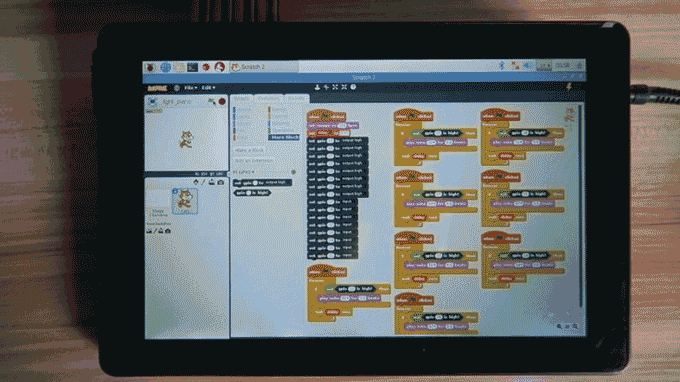
By Aalyia Shaukat, contributing writer
The RasPad, a portable Raspberry Pi tablet, has already brought in well over $300,000 since its launch on Kickstarter in late February. It doesn’t come as a surprise, considering most Raspberry Pi-based tablets listed online are do-it-yourself (DIY). After combing through a few popular blogs, you quickly realize the level of complexity necessary in mating up a tablet with a Raspberry Pi — you either need a D printer with a decent knowledge in Solidworks or access to a mini-machine shop just to build the case. As made evident in SunFounder’s Kickstarter campaign, the RasPad heavily caters toward aspiring hobbyists hoping to break down some of the hardware and software barriers that come with programming and integrating a small computer into any gadget that their hearts desire. Moreover, the tablet could prove useful for veteran hobbyists seeking to update/edit current projects on the go.
RasPad overview
The kit I received came with: the RasPad (a display mounted on a plastic holder), a Raspberry Pi 3 Model B, an SD card with Raspbian preloaded, and two plastic segments for securing the Raspberry Pi compartment. The RasPad features an embedded display at the top end of its plastic chassis, along with the HDMI and micro-USB cables that are routed through a middle layer — where the display circuitry, speakers, and battery sit — down to the Raspberry Pi insert at the bottom end. There are four mounts to stabilize the Raspberry Pi in place, along with an additional plastic piece that protects the PCB and associated components from the vibrational hazards that affect portable devices (e.g.: excess rubbing, constant motion, etc.).
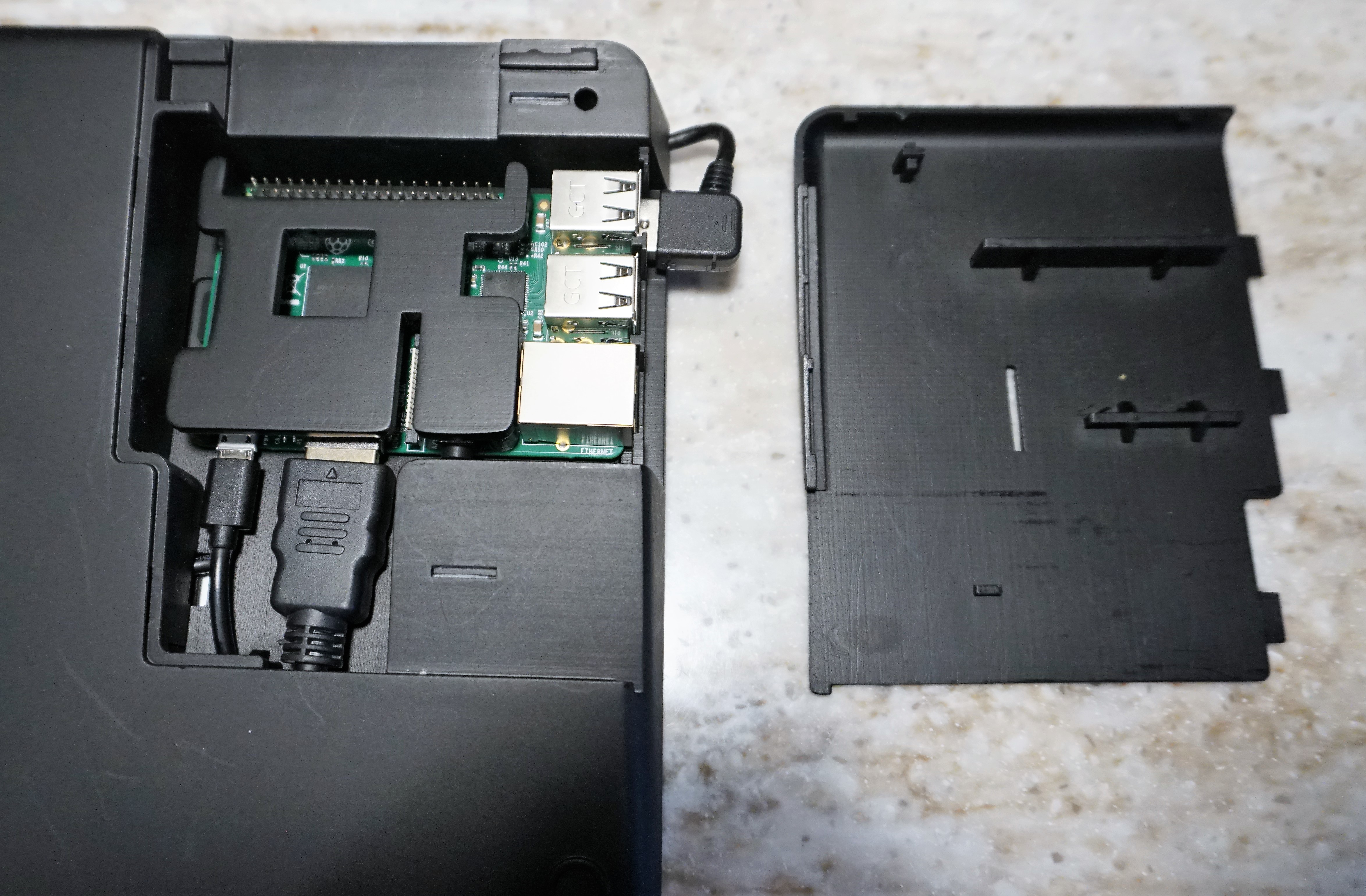
The Raspberry Pi sits on four tabs with two additional plastic covers to position it and lock it into place.
The cover that slides over the protective plastic bit has two long extruded plastic pieces that stick out at specific heights in order to hold the protective plastic bit in place when locked into position. When I was holding the RasPad in my lap, the final sliding piece did tend to glide off quite a bit, so you may find yourself either repositioning it or taping it down just to hold it in place. I should also note that the screen nearly popped off when I tried to pick it up after it was flipped on its face; the cabling was the only thing that held it together. This could be because it looked like the package was handled roughly when it was shipped to me, which is no fault of Sunfounder’s, but it still should not have come out that easily. Nonetheless, a few simple homemade modifications (velcro, glue, or duct tape) could easily keep it in place.
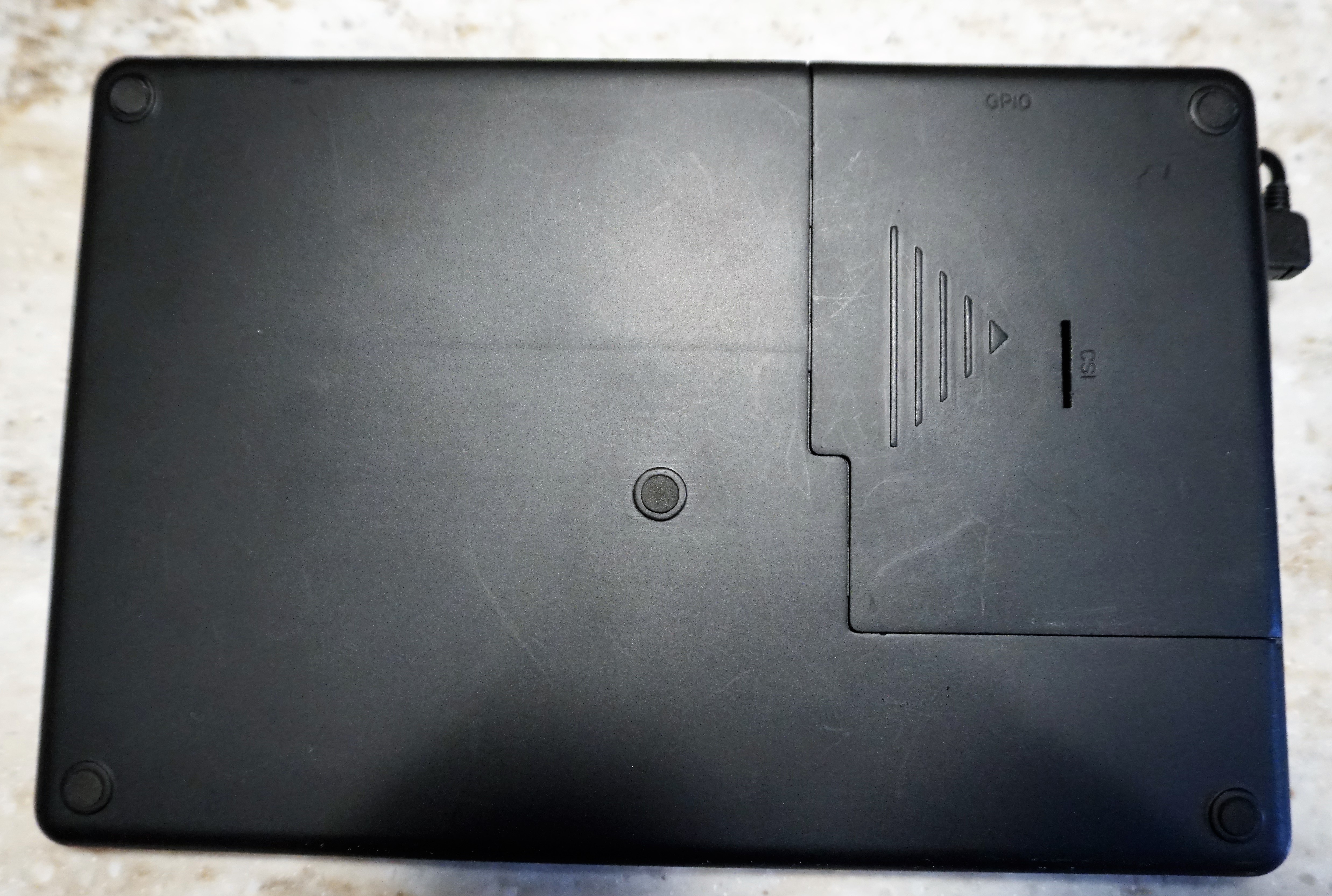
Base of RasPad with CSI and GPIO slots.
It is simple enough to set up out of the box: the RasPad uses the Raspbian OS and comes with a number of preinstalled programs and games on the SD card. This might be an early prototype issue, but surprisingly, I did not find the Sunfounder’s drag-and-drop program for novices, Dragit, in the list of programs. More often than not, you’ll find difficulty in using the touchscreen reliably for any of the other graphical programming programs, so a wireless keyboard/mouse is a must. Minor edits on the go could be done relatively easily through touch, although you will likely have to fiddle with the onscreen keyboard settings to find the ideal configuration.
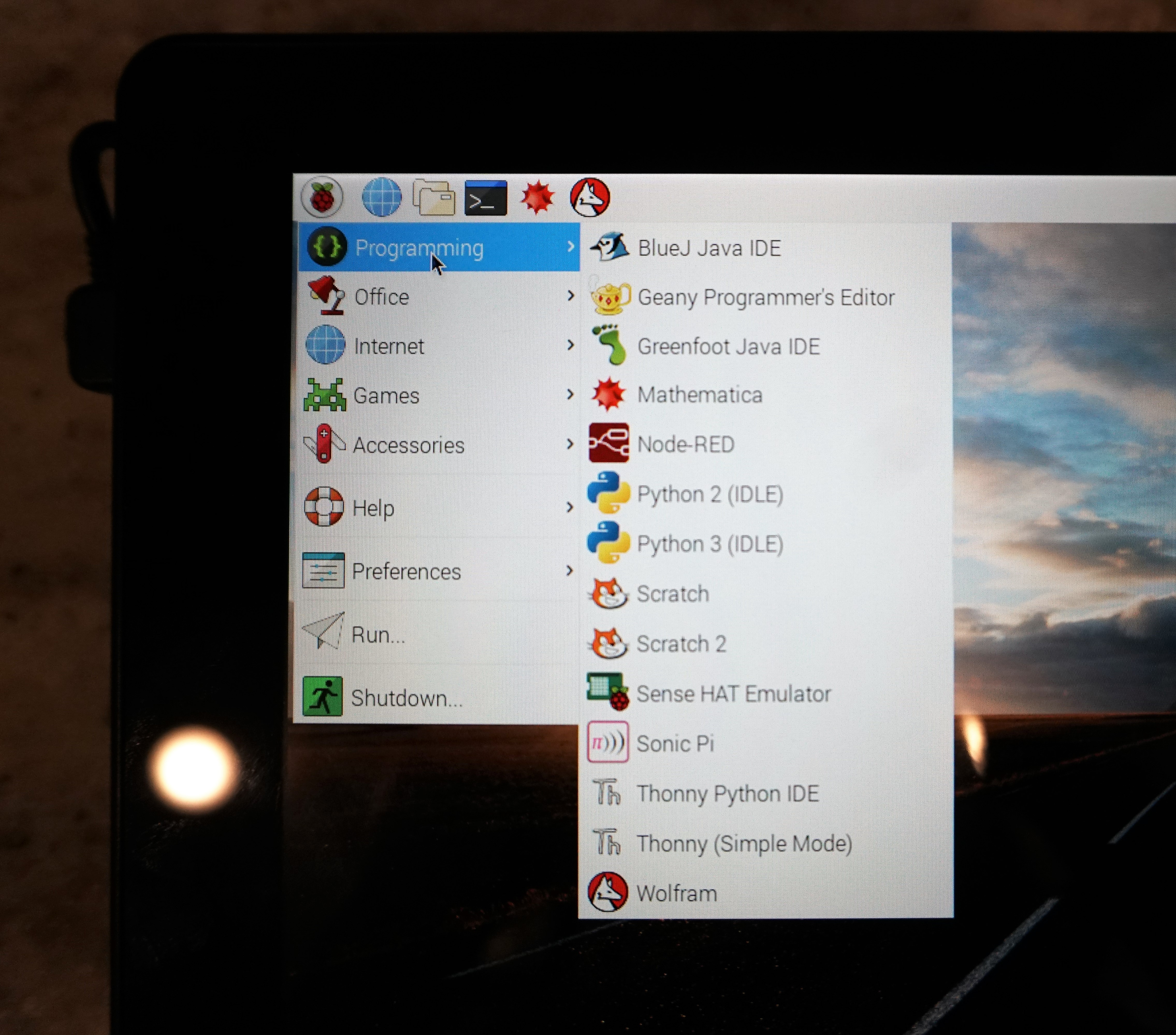
Some of the apps that come with the Raspberry Pi 3 Model B.
The case seemingly allows for the screen to be more easily viewed when flat on a table. There are four LEDs at the thin end of the base that indicate the level of charge to the internal battery and two speakers at the thicker end.
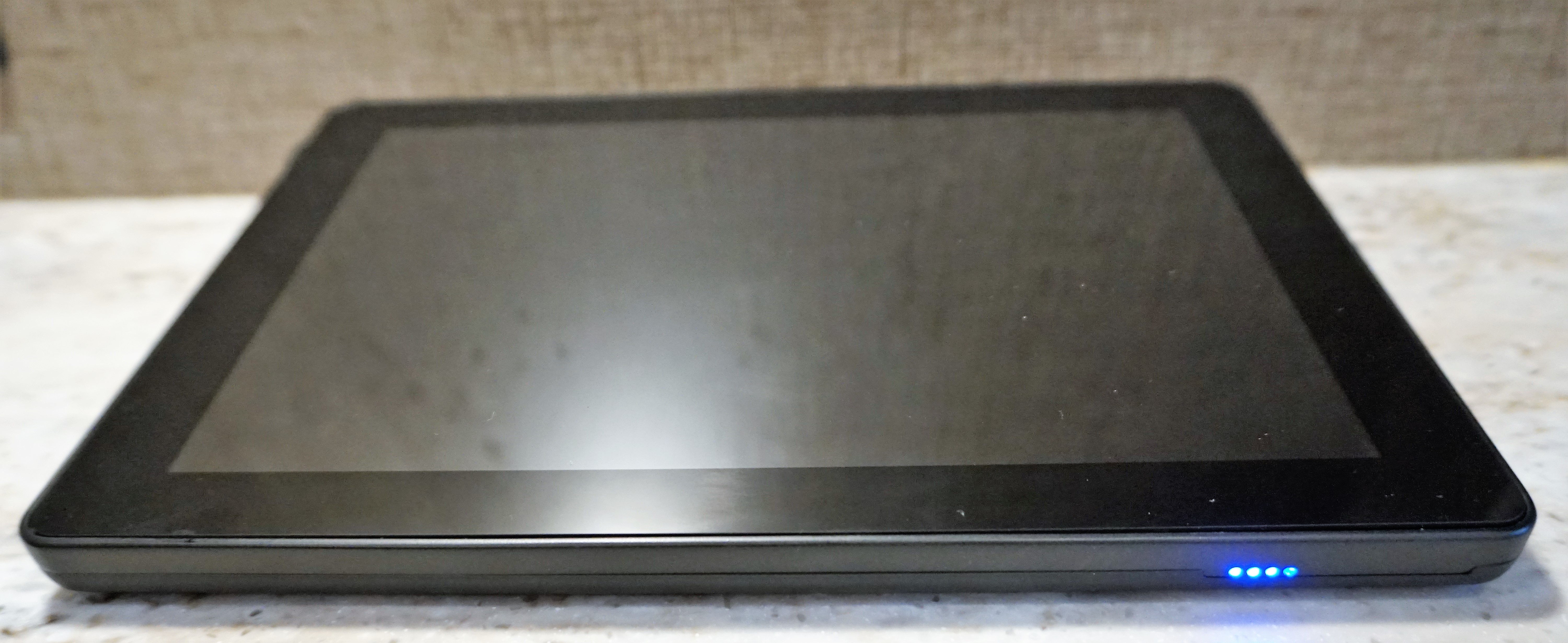
Four LEDs at the base indicate battery life. When the battery is drained, the RasPad lets out three beeps and shuts off.
On the right side, there are three buttons: one for power and the other two to control the screen brightness (not the volume, as one might think). There is also an HDMI port, audio output port, and micro-USB port. The HDMI port is an input, so one could import the screen from another computer onto the tablet — something that is seemingly counterintuitive as most users would probably want to switch to a larger display than to the 10-in. RasPad. Nonetheless, leveraging a separate display does defeat the purpose of having a portable tablet in the first place.
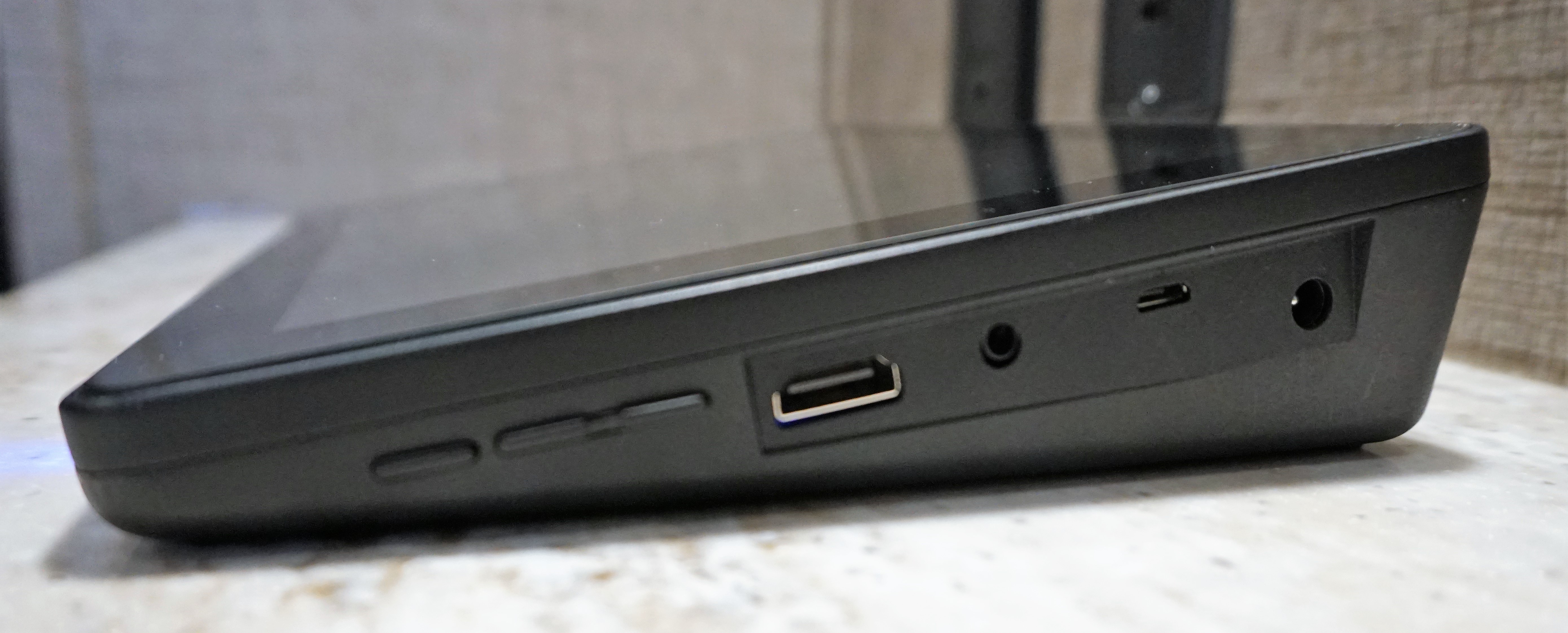
Right edge of base with (from left to right) power button and brightness controls as well as HDMI, audio, micro-USB, and charging ports.
It’s also important to note that, when shipped, the USB cable that connects the display to the Raspberry Pi sits in a plastic holder that will need to be disconnected and plugged into the RaspBerry Pi’s USB port. It took me far longer than I’d like to admit to figure that out. For more information on the RasPad’s innards reference, the Hackster blog posted last week covers that pretty well.
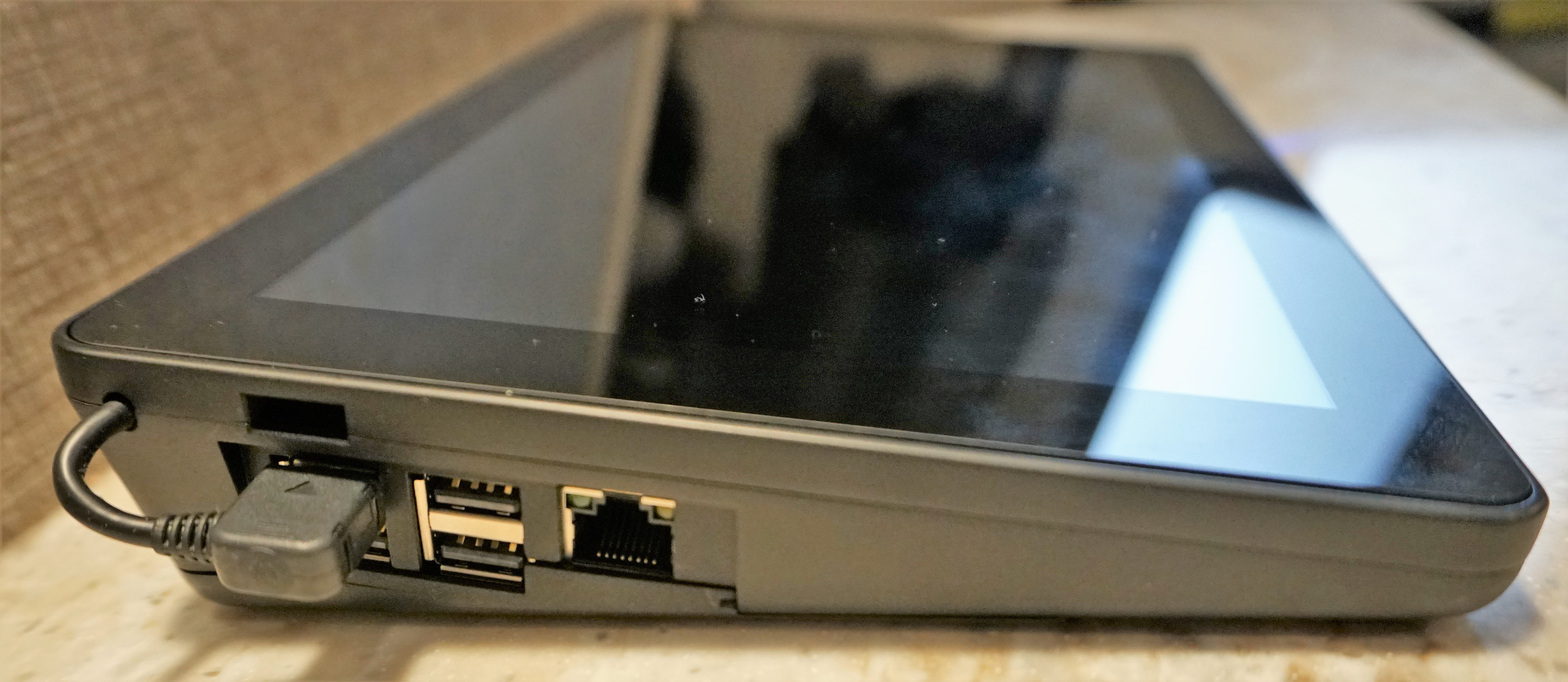
Left edge of the base where the USB cable for the display sits on a holder and must be connected into the Raspberry Pi USB port to enable touch sensitivity.
Using the RasPad
As a parent, I could very rapidly see the benefits of leveraging the RasPad as a tool to educate children from their toddler to teenage years. Of course, the level of complexity would increase (hopefully). As a mother, I really appreciate not needing a dedicated desk just to program because all of my tables/countertops are already taken up by very important foodstuffs and toys. The customizable and modular aspects of the RasPad make it pretty ideal for families, given that the chassis creates sturdy and much more robust ways to interact with the Raspberry Pi. This is especially necessary if children are handling the product. For instance, I don’t let my son handle electronics unattended that aren’t IP68-rated and bulletproof.
Here is another video of me demoing the game. My son can be heard making airplane sounds and saying “apple” in the background.
All in all, the tablet is really affordable, with the starter kit coming in at $129. The next tier costs $189 but includes a new Raspberry Pi 3 Model B. I would personally consider the package with the sensor kit being that it’s not ridiculously priced at $249 and purchasing most of this piecemeal from SparkFun or Adafruit would likely cost a bit more. I found that the tablet was just large enough to be able to work on but small enough to carry around with one hand. The angle, size, and form factor is pretty nifty because you can work on a flat surface and it’s not so easily knocked over on its side. The case is also pretty spacious, so it may be possible to increase battery capacity or make some other minor tweaks. The screen popping out was a big issue but is easily fixed and, if the RasPad is used daily, a protective case of some kind would be very useful anyway. In the end, the RasPad is a modular piece of equipment, which is always useful. Future plans include using our RTL-SDR to make a portable spectrum analyzer up to 3 GHz and tons more custom interactive toddler education.
Advertisement
Learn more about Electronic Products Magazine





